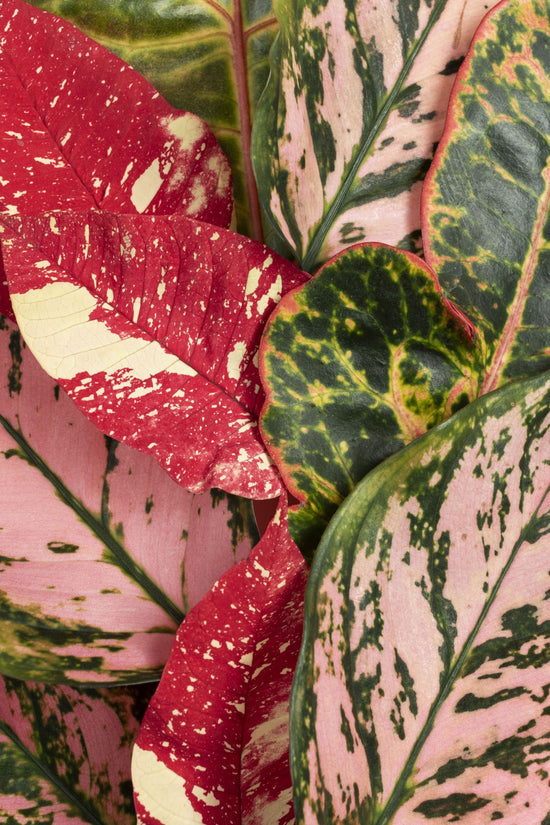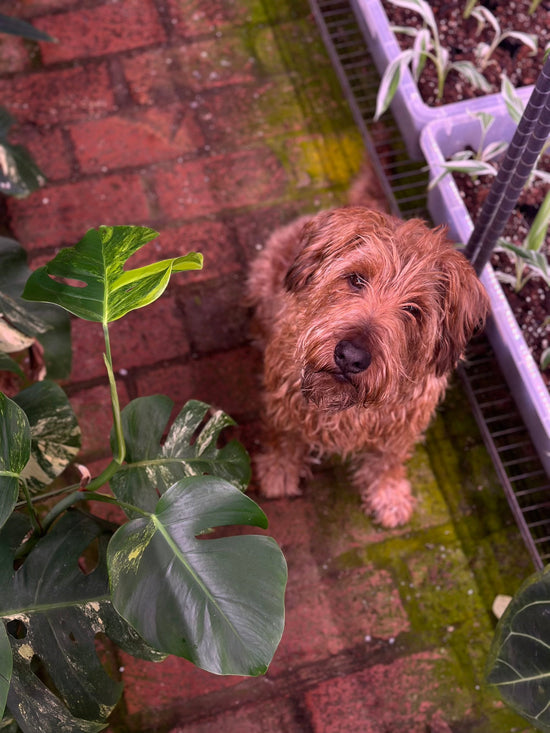For gardeners and balcony plant lovers, summer is a time full of life and color. Proper care during this season is crucial to developing the plants' full potential and preserving their beauty. From the right location to regular watering, from promoting root growth to protecting against pests - every aspect of care plays an important role in the prosperity of these living creatures. This article offers practical tips and valuable information to help your summer flowers and balcony plants get through the warm season in the best possible way. Let's discover together how you can transform your garden or balcony into a blooming oasis!
plant watering
frequency and quantity
Watering is one of the most important aspects of plant care, especially in summer. Tropical plants require a regular and consistent water supply, as they are often used to high humidity and frequent rainfall in their natural environment.
Frequency: During the summer, you should water more frequently than during the cooler months. Most tropical plants require watering every two to three days during this time, but the exact frequency depends on the type of plant and the specific conditions.
Amount: It is important to keep the soil slightly moist but not wet. Too much water can cause root rot, while too little water will dry out the plant. A good guideline is to allow the top inch of soil to dry out between waterings.
Another indication of the plants' water needs are the leaves. If the leaves hang limply or turn yellow, this can indicate a lack of water. Standing water in the saucer, on the other hand, indicates overwatering and should be avoided.
methods of irrigation
There are several methods to effectively water tropical plants:
-
Direct watering: Water plants directly at the base to deliver water close to the roots. Avoid watering over the leaves as this can encourage fungal diseases.
-
Submersible watering: Place the pot in a basin of water and allow the plant to absorb the water from below. This method is particularly effective for plants that are in pots with good drainage.
-
Irrigation systems: Automatic irrigation systems can ensure a consistent water supply, especially if you are away during the hot summer months. Drip systems or irrigation timers are particularly useful here.
Additionally, mulching the soil surface can help retain moisture in the soil and reduce the need for frequent watering. Make sure the materials you use do not attract pests or exacerbate the waterlogging problem.
The right lighting conditions for your summer flowers
Direct vs. indirect sunlight
Tropical plants thrive best with sufficient light, but they often do not tolerate direct sunlight well, especially in the hot summer months. Too much sunlight can cause leaf burns and stress the plants.
-
Direct sunlight: Avoid exposing tropical plants to direct sunlight during the hottest times of the day. Temperatures can rise quickly, especially on the terrace or balcony, and damage the plants. Place your plants in places where they only receive direct sunlight in the morning or late afternoon.
-
Indirect sunlight: Most tropical plants prefer bright, indirect light. Place them in the shade of larger plants or use translucent curtains to filter the light. On the balcony or terrace, parasols or awnings can provide shade.
use of shade providers
When there is strong sunlight, it is important to take protective measures to protect the plants from heat damage.
-
Umbrellas and awnings: Use umbrellas and awnings on the terrace or balcony to protect the plants from intense heat. These tools can reduce the amount of light and make the temperatures more comfortable for the plants.
-
Placement: Make sure to place your plants where they are protected from extreme temperatures. In particularly hot regions, it may be helpful to place plants on the north or east side of the house, where they will be less exposed to direct sunlight.
-
Natural shade providers: Larger plants or garden furniture can act as natural shade providers. These not only provide protection from direct sunlight, but can also help to lower the ambient temperature.
In addition to the correct placement, it is important to check the plants regularly for signs of heat stress. Burnt or yellowed leaves are an indication that the plants are getting too much sun. In such cases, you should change the location or provide additional shade.

fertilization
Proper fertilizers
Proper fertilization is crucial for the healthy growth of tropical plants, especially during the intensive growth phase in summer. During this time of year, tropical plants often have high nutrient requirements that must be met by regular fertilization.
-
Suitable fertilizers: Use fertilizers that are specifically formulated for tropical plants or houseplants. These contain the necessary macro and micro nutrients such as nitrogen, phosphorus and potassium, as well as trace elements such as iron and magnesium.
-
Organic vs. inorganic fertilizers: Organic fertilizers, such as compost or worm castings, improve soil structure and promote soil life. Inorganic fertilizers deliver nutrients more quickly and in a more targeted manner. A combination of both can often produce the best results.
fertilization frequency and methods
The frequency and method of fertilization is just as important as choosing the right fertilizer.
-
Fertilization frequency: In summer, you should fertilize tropical plants every two to four weeks. During the growing season, they need more nutrients to grow vigorously and produce flowers. However, be careful not to over-fertilize the plants, as this can lead to root damage and nutrient blockages. During a heatwave, it may be a good idea to reduce the amount of fertilizer, as the plants need more water and the concentration of nutrients could otherwise become too high.
-
Fertilization methods:
-
Liquid fertilizer: Liquid fertilizers are easy to use and can be added directly to the watering water. This method ensures rapid nutrient absorption by the roots.
-
Solid fertilizers: Granules or sticks release nutrients slowly over a longer period of time. This method is particularly useful for plants that are not watered frequently.
Make sure to dose the fertilizers according to the manufacturer's instructions. Overdosing can damage the plants and cause root burns. It is important not to put additional stress on the plants, especially during a heatwave.
You should also make sure that the soil is moist before fertilizing to avoid root damage. Fertilizing immediately after watering is ideal, as the nutrients can be better distributed and absorbed.
When caring for the lawn and the surrounding garden areas, it is important to apply similar principles. Regular care and the right supply of nutrients ensure healthy growth and resistance to stress factors. You can find more information on optimal care in special guidebooks or from specialist retailers.
-
pest control
Common Pests in Summer
There are some pests that particularly frequently attack tropical plants:
-
Aphids: These small, soft insects suck the plant sap and weaken the plant. They often leave sticky residue on the leaves.
-
Spider mites: These tiny arachnids are especially active in dry, hot conditions. They cause yellow spots on leaves and spin fine webs.
-
Scale insects: These pests often sit motionless on the leaves and stems and also suck the plant sap. They are difficult to control because of their protective shell.
Natural and chemical control methods
If you still discover pests on your plants, there are several methods to combat them:
-
Mechanical removal: Remove small amounts of pests manually. You can wipe them off with a damp cloth or carefully pick them off.
-
Biological agents: Use biological pesticides such as neem oil or soap solutions. These are gentler on the plants and the environment.
-
Chemical agents: In stubborn cases, you can also use chemical pesticides. Make sure you use the correct dosage and follow the manufacturer's instructions.
Tips for Prevention
The best way to control pests is prevention. Here are some tips that can help you:
-
Regular inspection: Check your plants regularly for pests. The sooner you notice an infestation, the easier it is to combat it.
-
Healthy plants: Healthy plants are more resistant to pests. Therefore, ensure good watering, sufficient light and regular fertilization.
-
Natural enemies: Promote natural enemies of pests in your garden. Ladybugs, lacewings and predatory mites are effective helpers in pest control.
Care during the seasons
Maintaining the lawn and surrounding garden areas also helps to control pests. A well-kept lawn and healthy garden plants reduce the likelihood of pest infestation. During the warm season, you should pay particular attention to keeping the garden clean and tidy to provide fewer hiding places for pests.
More care tips for plants
In order for your tropical plants to thrive in summer, in addition to watering, lighting conditions and fertilization, some other care measures are also important:
-
Humidity: Tropical plants love high humidity. Especially indoors or in dry locations, it can be helpful to increase the humidity around the plants. You can do this by regularly spraying the leaves with water or by setting up humidifiers.
-
Regular cleaning: Keep your plants free of dust that can accumulate on the leaves. Once a week, you can gently wipe the leaves with a damp cloth to keep the pores clear and promote photosynthesis.
-
Repotting: Check regularly whether your plants have enough space in the pot. If the roots fill the entire space or grow out of the pot, it is time for a larger pot. Ideally, repot the plants in spring or summer when they are actively growing.
-
Consider special needs: Each tropical plant has its own needs, so be sure to research specific care requirements for each type of plant you have. For example, some plants like it a little drier, while others need more moisture.
-
Pruning and shaping: Regular pruning promotes healthy growth and helps keep the plant in shape. Remove dead leaves and branches to maintain the plant's health and prevent pest infestation.
-
Consider winter care: Even if it is warm outside, you should already be thinking about the coming winter months. Some tropical plants require special care during the cold season, such as protection from drafts and reduced watering.
By following these additional care tips, you can ensure that your tropical plants not only stay healthy throughout the summer, but also develop and thrive well in the long term.





